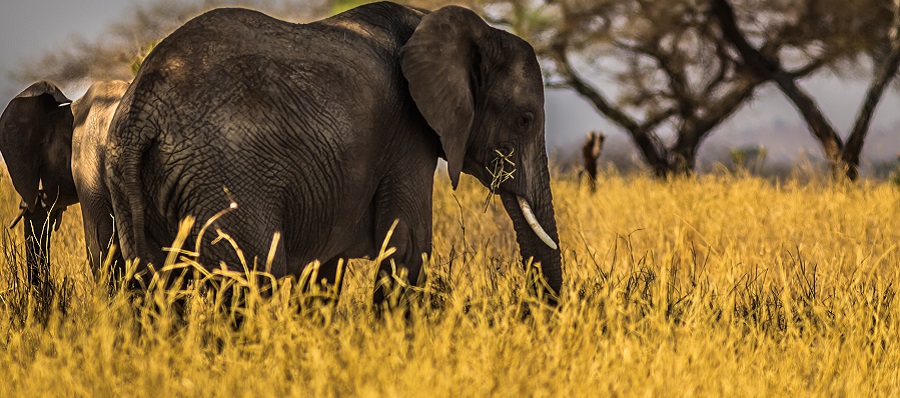
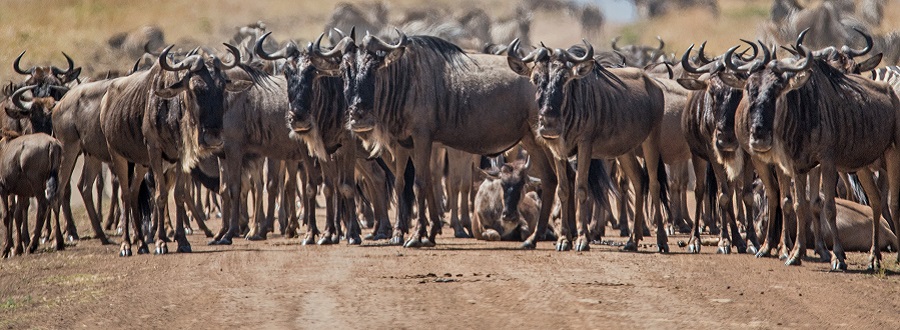
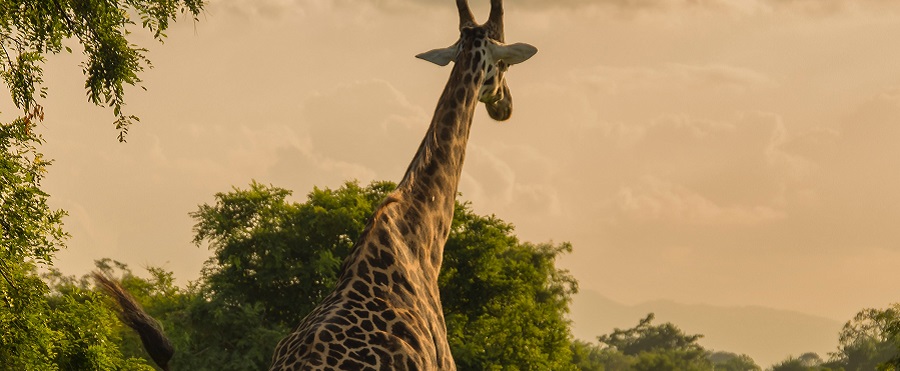

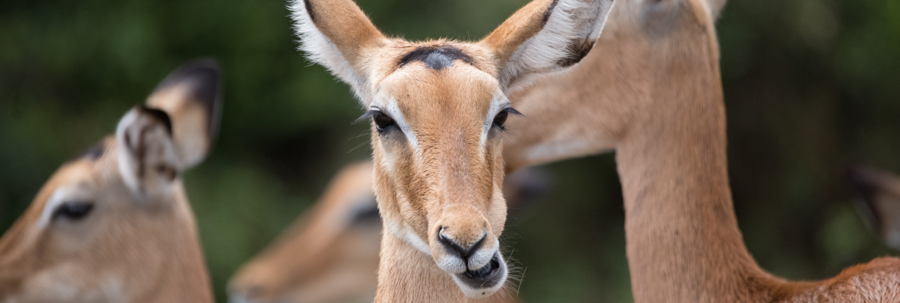
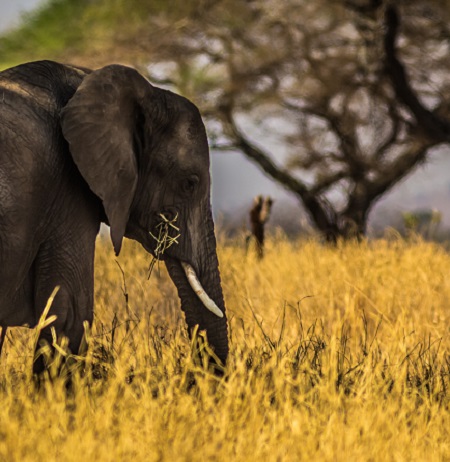
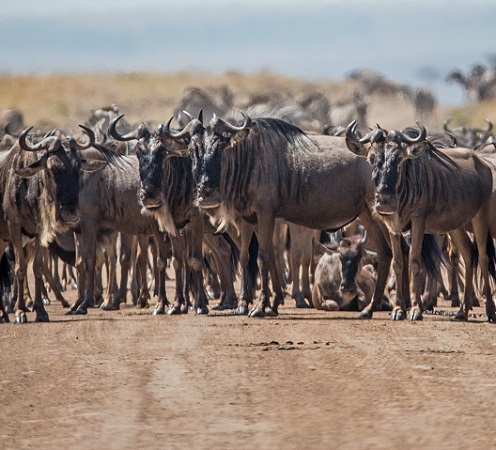
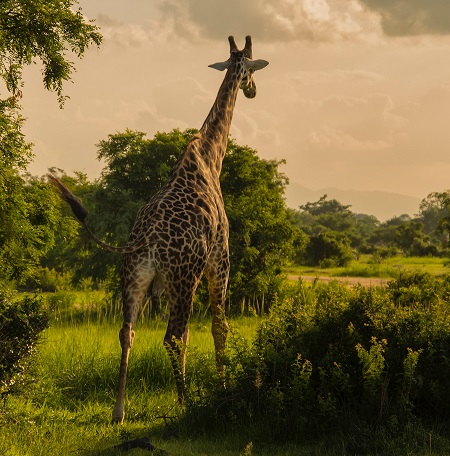
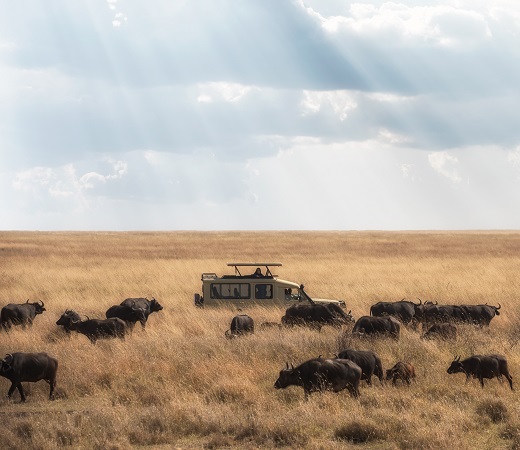
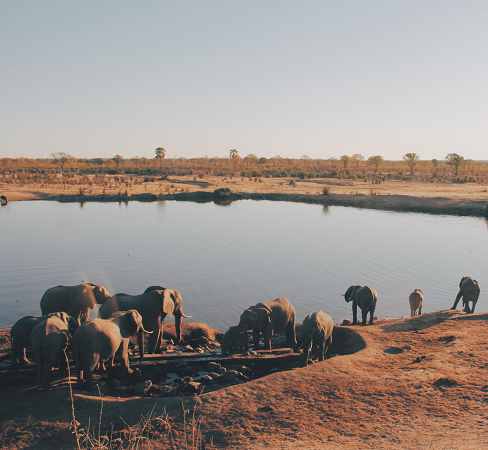
Option eins
Eine 4-tägige Safari in Tansania bietet ein unvergessliches Erlebnis in einigen der gefeiertsten Parks Afrikas. Entdecken Sie die Big Five, während Sie Tarangire, den Ngorongoro-Krater und die Serengeti auf einer sorgfältig gestalteten Reiseroute erkunden. Dieser umfassende Guide sorgt dafür, dass Sie die Must-See-Sehenswürdigkeiten und verborgenen Schätze nicht verpassen. Reisen Sie mit einem lokalen Spezialisten für Fachkenntnisse und schöne Erinnerungen für ein Leben lang. Buchen Sie Ihre Traum-Safari noch heute, um die Schönheit Tansanias zu entdecken!
Die Kosten für eine 4-tägige Safari in Tansania beginnen bei 800 bis 1200 US-Dollar und bieten einen umfassenden Guide für eines der beliebtesten Reiseziele Afrikas. Dieses vollständige Paket stellt sicher, dass alles, was Sie wissen müssen, abgedeckt ist, einschließlich geführter Touren, Unterkünften und Mahlzeiten. Entdecken Sie die Schönheit von Tansanias erstklassigen Parks und genießen Sie ein unvergessliches Erlebnis. Buchen Sie noch heute Ihre Traum-Safari für ein einmaliges Abenteuer, das schöne Erinnerungen für ein Leben lang schaffen wird!
Ein 4-tägiger Safari in Tansania im Jahr 2025-2026 bietet ein unvergessliches Erlebnis, während Sie ikonische Wildtierziele wie Tarangire, den Ngorongoro-Krater und die Serengeti entdecken. Diese sorgfältig gestaltete Premium-Guided-Tour ermöglicht es Ihnen, die Big Five zu beobachten und die atemberaubenden Landschaften zu erleben, die die Schönheit jedes Parks freischalten. Mit all-inclusive Unterkünften und Mahlzeiten genießen Sie ein vollständiges Paket aus Komfort und Abenteuer. Dies ist eine einmalige Gelegenheit, um unvergessliche Erinnerungen zu schaffen und in die reiche Biodiversität Tansanias einzutauchen. Buchen Sie Ihren Traum-Safari jetzt und erhalten Sie die neuesten Informationen, um eine reibungslose Reise mit fachkundiger Anleitung von lokalen Spezialisten zu gewährleisten.
Unternehmen Sie eine unvergessliche Erfahrung mit unseren sorgfältig gestalteten 4-Tage-Tansania-Safari-Paketen, die perfekt sind, um Ostafrikas atemberaubende Tierwelt und Landschaften zu entdecken. Diese alles inklusive Pakete bieten geführte Touren zu ikonischen Nationalparks wie Tarangire und dem Ngorongoro-Krater, wo Sie die Big Five erleben und atemberaubende Ausblicke genießen können. Jeder Tag beinhaltet Fachkenntnisse und umfassende Reisepläne, die sicherstellen, dass Sie schöne Erinnerungen für ein Leben lang schaffen. Mit Preisen von 800 bis 1200 US-Dollar bieten wir einen vollständigen Leitfaden, der zu jedem Budget passt. Buchen Sie Ihren Traum Safari jetzt für ein einmaliges Erlebnis, das verspricht, das Beste zu sein, was Sie je hatten! Verpassen Sie es nicht— buchen Sie noch heute online!
Wir können Arusha am Morgen verlassen und in den Tarangire Country Wide Park fahren, in dem Sie die großen Termitenhügel und die historischen Affenbrotbäume bewundern können. Die malerische Landschaft und das zahlreiche Hühnerleben tragen dazu bei, die ruhige Atmosphäre des landesweiten Parks von Tarangire zu steigern. Die außergewöhnliche Elefantenpopulation ist ein äußerst wunderbarer Anblick. Afrikanische Elefanten sind die wichtigsten Landsäugetiere und Menschen können bis zu sieben Tonnen wiegen. Tarangire verschiedene natürliche Welt umfasst Löwen, Giraffen, Warzenschweine, Strauße, Impalas, Geparden, Mungos, Büffel und Paviane. Während Ihre Freizeittruppe eine Pause einlegt, können wir Sie zum Lake Manyara bringen, wo Sie Abendessen und Übernachtung erhalten.
Ein appetitliches Frühstück führt nach Ngorongoro zum landesweiten Serengeti-Park. Wir können den malerischen Kurs zur Serengeti nehmen, der es uns ermöglicht, in die Nähe des Ngorongoro-Kraters zu reisen. Es besteht die Möglichkeit, Wild zu beobachten. Die unendliche goldene Savanne mit Schattenflecken, die durch die Nutzung der Vegetation und der Natur entstanden sind, macht es leicht zu erkennen, warum die Serengeti eines der sieben Naturwunder Afrikas ist. Wir können verhindern, dass Sie Ihr Picknick-Mittagessen auf einer Kopje (einem kleinen Hügel in einer normalerweise flachen Gegend) genießen können. Wir fahren weiter in die Serengeti für eine gemütliche Sportfahrt. Die Nacht verbringen Sie in der Serengeti.
Wir können unseren Tag mit einer frühmorgendlichen Spielkraft in der wichtigen Serengeti beginnen. Die Savanne ist eine lebendige Landschaft und die Luft wird von den Melodien der Vögel durchflutet, wenn das regenerierte Tageslicht beginnt, die gesamte Landschaft zu erhellen. Ihr Guide wird sich die Abdrücke auf dem Boden ansehen, um Raubtiere zu verfolgen. Wir können zum Ngorongoro-Krater reisen. Sie können mit Abendessen und Übernachtung versorgt werden.
Nach einem frühen Morgenfrühstück können wir zum Ngorongoro-Krater eilen, da es kilometerweit die schöne Zeit ist, um Tiere zu identifizieren. An diesem Tag können wir eine Erholungskraft jenseits des Kraters genießen und an einem kleinen See im Park ein Picknick machen. Der See ist heimisch für viele Flusspferde und Zugvögel, so dass die Gäste sicher viel Spaß haben werden! Aufgrund der im Krater geschaffenen tierischen „Oase“ besteht möglicherweise eine hohe Chance, jedes Mitglied der „Massive 5“ zu erkennen. Die Institution beherbergt einige der mächtigsten Tiere Afrikas – den wilden Löwen, den massiven Elefanten, den heimlichen Leoparden, das stürmende Nashorn und den mächtigen Wasserbüffel. Der Ngorongoro-Krater ist sicherlich ein großartiger Ort. Wussten Sie, dass es vor über zwei Millionen Jahren hergestellt wurde? Ein massiver Vulkan brach aus und ließ den Vulkan kollabieren, hinterließ jedoch einen hervorragend ungebrochenen Krater, der als Caldera bezeichnet wird. Im bemerkenswerten Krater können Sie verspielte Zebras, schwerfällige Flusspferde, schnelle Gnus und gackernde Hyänen erwarten. Darüber hinaus gibt es Schwärme anmutiger Flamingos entlang des Soda-Sees, während hungrige Falken und Geier den Himmel umkreisen, um ihre nächste Mahlzeit aus weggeworfenen Kadavern zu suchen. Schöne Störche, Ibis und Kraniche sind beliebte Wasservögel im Krater, ein Anblick, den Sie nicht mehr verpassen sollten. Nach einem schönen Nachmittag mit Tierbeobachtungen werden wir schließlich unser Abenteuer zurück nach Arusha beginnen.
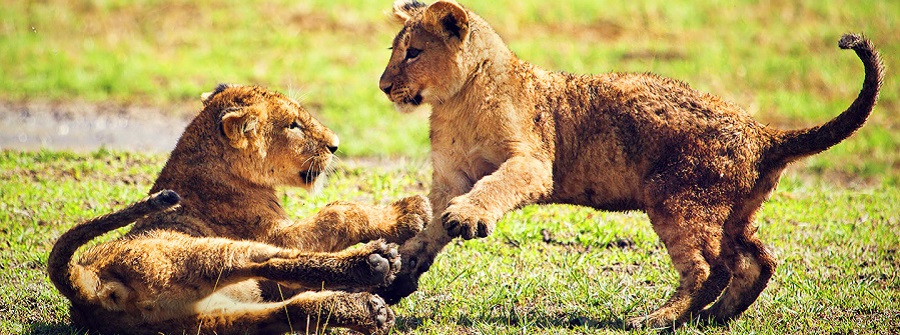
You will be staying at camping-sites and lodges!
Option Zwei
Was können Sie von dieser Safari erwarten? Diese Ndutu Migration Safari während der Kalbungstour wurde speziell entwickelt, um sich auf die große Serengeti-Gnuwanderung zu konzentrieren und Ihre Chance zu erhöhen, sie zu sehen. Die südlichen Serengeti- und Ndutu-Gebiete in Tansania sind die besten Orte für die Monate Januar, Februar und März, um Tausende von Gnus in den Ebenen zu beobachten, die auf den reichen Kurzgrasebenen weiden. Die Predator-Action ist auf ihrem Höhepunkt mit großartigen Sichtungen von Geparden, Löwen, Hyänen und Leoparden und einer sehr guten Chance, spektakuläre, adrenalingeladene Kills zu sehen.
Nach einem Frühstück werden die Touristen vom Hotel in Arusha abgeholt und dann zum Flughafen von Arusha für einen kurzen Flug (50 Minuten) / Auto (4x4 Jeep mit offenem Dach) in die Serengeti North Ndutu Area gebracht. Bei der Ankunft treffen Touristen einen Autofahrerführer für eine ganztägige Pirschfahrt in Ndutu, um die herrliche Migration zu sehen. Am Abend fahren wir zum Abendessen und zur Übernachtung ins Camp. Lake Ndutu Gebiet, gelegen im Ngorongoro Naturschutzgebiet, Teil des südlichen Serengeti Ökosystems. Der Ndutu-See ist alkalisch, wie die meisten anderen Rift-Seen, aber das Wasser ist immer noch trinkbar und wird von einer Vielzahl lokaler Wildtiere genutzt. Der Großteil der Gnuswanderung findet normalerweise von Dezember bis April auf den Kurzgrasebenen statt. Die Gegend ist normalerweise stark von Elefanten, spektakulären Vögeln und einheimischem Wild bevölkert.
Mahlzeiten: Frühstück, Mittag- und Abendessen
Unterkunft: Camp oder Lodge.
Am zweiten Tag unternehmen die Touristen eine frühmorgendliche Pirschfahrt in der Ndutu-Region und kehren am Nachmittag zum Mittagessen zum Camp zurück. Sie genießen auch ein abendliches Spiel und kehren dann zum Abendessen und zur Übernachtung ins Camp zurück. Ausführliche Erklärungen zu diesem großartigen und attraktiven Weltereignis, auf das Tansania stolz ist, werden bereitgestellt. Und am Abend, wenn die Sonne untergeht, Tansanias ältester und beliebtester Nationalpark, auch Weltkulturerbe und kürzlich zum 7. Weltwunder erklärt, ist die Serengeti berühmt für ihre jährliche Wanderung.
Mahlzeiten: Frühstück, Mittag- und Abendessen
Unterkunft: Camp oder Lodge.
Der Serengeti-Nationalpark ist bekannt für seinen gesunden Bestand an anderen ansässigen Wildtieren, insbesondere den "Big Five", benannt nach den fünf wertvollsten Trophäen, die von Jägern erbeutet wurden: Löwe: Die Serengeti soll die größte Löwenpopulation Afrikas beherbergen zum Teil auf die Fülle der Beutetiere. In diesem Ökosystem leben mehr als 3.000 Löwen. Afrikanischer Leopard: Diese zurückgezogen lebenden Raubtiere werden häufig gesehen.
Mahlzeiten: Frühstück, Mittagessen, Abendessen
Unterkunft: Camp oder Lodge.
Die Touristen genießen eine morgendliche Pirschfahrt und kehren dann zum Frühstück zum Camp zurück. Danach fahren sie von einem Fahrer zurück nach Arusha. Sie werden zu Ihrem nach eigener Absprache gebuchten Hotel gebracht.

You will be staying at camping-sites and lodges!
Option Drei
Auf dieser berühmten Safari erkunden Sie zwei der 7 Naturwunder Afrikas. Beobachten Sie die atemberaubende Wanderung der Gnus in der Serengeti und entdecken Sie eines der seltenen Nashörner im Ngorongoro-Krater. Auf dieser Safari erleben Sie ein afrikanisches Abenteuer, das Ihre kühnsten Träume übertrifft.
Wir verlassen Arusha im Morgengrauen und fahren zum Serengeti-Nationalpark. Wir werden auf einer Straße in der Nähe des Randes des Ngorongoro-Kraters in die Serengeti fahren, um unterwegs Tierbeobachtungen zu machen. Die goldene Savanne und die endlosen Ebenen voller Zebras, Gnus und Giraffen machen es Ihnen viel leichter zu verstehen, warum die Serengeti eines der Sieben Naturwunder Afrikas ist. An diesem Tag genießen wir ein Picknick-Mittagessen auf der Naabai Kopje (einem kleinen, felsigen Hügel in einer im Allgemeinen flachen Gegend), wo Sie die Möglichkeit haben, die berühmten rosafarbenen Eidechsen der Serengeti zu sehen. Nach dem Mittagessen fahren wir weiter in die Ebene für eine gemütliche Pirschfahrt. Sie übernachten in der Serengeti und schlafen bei den verspielten Rufen der Zebras und Hyänen ein. Wie bei jeder Tour garantiert.
Hauptunterkunft
Unterkünfte: Kundenauswahl Öffentlicher Campingplatz/ Getönter Campingplatz/ Lodges
Mahlzeiten: Wasser wird in allen Mahlzeiten kombiniert (andere Getränke sind nicht inbegriffen)
Wir beginnen den Tag im Herzen der Serengeti. Die Tiere in der Serengeti sind sehr unterschiedlich, so dass die Besucher wahrscheinlich die Aussicht auf Löwen, Leoparden, Elefanten, Geparden, Wasserbüffel, Zebras und Gnus genießen werden. Darüber hinaus gibt es im Park Elands, Hyänen, Gazellen, Krokodile, Giraffen, Zebras, Affen, Paviane, Flusspferde, Nashörner und Antilopen. Machen Sie sich keine Sorgen um die Jahreszeit Ihrer Safari, denn in der Serengeti gibt es das ganze Jahr über Tiere! Nach der Pirschfahrt wird ein köstliches Abendessen serviert.
Hauptunterkunft
Unterkünfte: Kundenauswahl Öffentlicher Campingplatz/ Getönter Campingplatz/ Lodges
Mahlzeiten: Wasser wird in allen Mahlzeiten kombiniert (andere Getränke sind nicht inbegriffen)
Dieser Tag markiert den letzten Tag der Pirschfahrt in der Serengeti, bevor wir uns auf den Weg zum Ngorongoro-Krater machen. Nach einer aufregenden Pirschfahrt voller Tierbeobachtungen und einem Picknick-Mittagessen fahren wir zum Krater. Diese Nacht werden wir dort bleiben, mit Blick auf die ununterbrochene Caldera des Ngorongoro-Kraters. Die Aussicht auf den Sonnenuntergang über der Savanne ist definitiv atemberaubend. Nach einem langen Tag voller Abenteuer genießen die Gäste ein leckeres Abendessen, das von unserem freundlichen Koch zubereitet wird.
Hauptunterkunft
Unterkünfte: Kundenauswahl Öffentlicher Campingplatz/ Getönter Campingplatz/ Lodges Mahlzeiten: Wasser wird in allen Mahlzeiten kombiniert (andere Getränke sind nicht inbegriffen)
Nach einem frühen Morgenfrühstück eilen wir zum Ngorongoro-Krater, da dies die beste Zeit ist, um Tiere zu beobachten. An diesem Tag werden wir eine Pirschfahrt rund um den Krater genießen und an einem kleinen See im Park ein Picknick machen. Der See ist die Heimat vieler Flusspferde und Zugvögel, so dass die Gäste den Besuch sicher genießen werden! Aufgrund der im Krater geschaffenen tierischen „Oase“ besteht eine hohe Wahrscheinlichkeit, jedes Mitglied der „Big 5“ zu entdecken. Die Gruppe umfasst einige der stärksten Tiere Afrikas – den wilden Löwen, den riesigen Elefanten, den heimlichen Leoparden, das stürmende Nashorn und den mächtigen Wasserbüffel. Der Ngorongoro-Krater ist wirklich ein erstaunlicher Ort. Wussten Sie, dass es vor über zwei Millionen Jahren entstanden ist? Ein großer Vulkan brach aus und ließ den Vulkan kollabieren, hinterließ jedoch einen vollkommen ungebrochenen Krater, der als Caldera bekannt ist. Innerhalb des erstaunlichen Kraters können Sie verspielte Zebras, schwerfällige Flusspferde, schnelle Gnus und gackernde Hyänen erwarten. Darüber hinaus gibt es Schwärme anmutiger Flamingos entlang des Soda-Sees, während hungrige Falken und Geier den Himmel umkreisen, um ihre nächste Mahlzeit aus entsorgten Kadavern zu suchen. Schöne Störche, Ibis und Kraniche sind beliebte Wasservögel im Krater, die Sie nicht verpassen sollten. Nach einem schönen Nachmittag voller Tierbeobachtungen treten wir endlich unsere Reise zurück nach Arusha an.

You will be staying at camping-sites and lodges!
Option Vier
Genießen Sie die ersten Schritte einer der anstrengendsten und fesselndsten Reisen der Natur, während Sie die Abkalbezeit erleben. Die Kalbsaison markiert den Beginn dieser Bewegung, bei der Hunderttausende von Tieren die schwierige Reise von der südlichen Serengeti in die ferne Masai Mara machen. In Ihrer viertägigen Kalbsaison-Safari können Sie zum Lake Manyara Countrywide Park gehen, in die südliche Serengeti fahren, um den Kalbeort von Ndutu zu sehen, und Ihren Ausflug mit einem Besuch in der schönen Umgebung des Ngorongoro Conservation beenden. Wenn Ihr Timing stimmt, können Sie möglicherweise sogar die wichtigsten Schritte der nordwärts gerichteten Bewegung dieser großen Herde sehen.
Sie verlassen Arusha zum späteren Frühstück zum Lake Manyara Nationalpark. Die Fahrt dauert ungefähr zwei Stunden, aber unterwegs passieren wir die Marktstadt Mto wa Mbu. Dieser Markt für landwirtschaftliche und frische Produkte ist ein Schmelztiegel der lokalen Kulturen und ein Paradies für Souvenirjäger. Nach einem kurzen Halt auf dem Markt des Landes betreten Sie den Lake Manyara Nationalpark. Der Park ist wirklich ein Spielplatz für Fotografen und bietet einige der besten Wildbeobachtungen der Welt. Es erwarten Sie viele der bekanntesten Tiere Afrikas, mit den baumkletternden Löwen als besonderem Leckerbissen. Diese stolzen Raubtiere lümmeln in Akazienbäumen und bitten praktisch darum, fotografiert zu werden. Vogelbeobachter werden feststellen, dass der Lake Manyara mit einer Vielzahl von Vögeln im Park ein absolutes Vergnügen ist. Große Flamingo-Schwärme, kreisende Greifvögel und die knallbunte Flieder-Brustroller können auch den Neuling in Staunen versetzen. Anschließend ziehen Sie sich zum Abendessen und einer guten Nachtruhe in Ihre gewählte Unterkunft zurück. In einem Camp oder einer Lodge
Wir werden ein frühes Frühstück einnehmen, da uns im Voraus ein großer Tag voller Erkundungen und Abenteuer gegeben wurde! Wir beginnen den Tag mit der malerischen Kraft, die näher am Ndutu-Standort der Serengeti / Ngorongoro-Schutzzone liegt. Unterwegs durchqueren wir die nebelverhangenen Regenwälder der Ngorongoro Conservation Umgebung, in der Sie mit etwas Glück Kapbüffel, Paviane oder sogar Elefanten und Leoparden im dichten Unterholz sehen können. Nach Ndutu sind es fast anderthalb Fahrten, aber Sie können das Abenteuer mit einer oder jeder der nicht obligatorischen Aktivitäten unterbrechen:
Oldupai Gorge Museum: Das Oldupai Gorge Museum, das ab und zu auch als Wiege der Menschheit bekannt ist, erinnert an einige der ältesten Zeugnisse menschlicher Besiedlung, die jemals entdeckt wurden. Hier können Sie eine Reihe der frühesten fossilen Beweise in der Welt der menschlichen Besiedlung sehen, das Oldupai Gorge Museum besuchen, um mehr über das menschliche Abenteuer zu erfahren, und die wunderschöne Aussicht auf diese krasse Schlucht genießen
Maasai Boma go to: Besuchen Sie eine der berühmten Maasai Bomas, in der Sie die Möglichkeit haben, traditionellen Massai-Tanz, Exkursionen und echtem Massai-Dorf beizuwohnen (und daran teilzunehmen) und sogar einen kleinen Andenkenkauf in der Nähe durchführen Marktplatz.
Für beide oben genannten Sportarten wird eine zusätzliche Gebühr erhoben. Sprechen Sie mit Ihrem Safari-Experten, um sie in Ihre Reiseroute aufzunehmen.
Nach einem leckeren Mittagessen am Picknickplatz ist es Zeit, den Ort Ndutu zu erkunden. Erleben Sie Afrikas ikonische Savannenlandschaft und staunen Sie über die schiere Anzahl von Tieren, die diese grasbewachsenen Ebenen durchstreifen.
Sie können es genießen, die riesigen Gnusherden zu beobachten, die sich über den Ort bewegen.
Abendessen und an einem einzigen Tag im Herzen der Region im Einklang mit der gleichen alten und der Art der Unterkunft, die von unseren Optionen verlangt wird.
Sie werden vor Sonnenaufgang aufstehen, damit wir im gesamten Ort eine Erholungskraft im Morgengrauen genießen können. Sehen Sie den Sonnenuntergangsherd in der Savanne als Fleischfresser einschließlich Geparden und Löwen in Bewegung, da es dennoch kühl genug ist, um zu jagen. Nach Ihrem Sonnenaufgang kehren Sie zum Frühstück in Ihr Motel zurück, bevor Sie ein Picknick-Mittagessen einnehmen und die Umgebung von Ndutu erkunden. Sie werden einen nachmittags langen Erholungsdruck durch den Ort erleben, indem Sie die Ufer jedes Lake Ndutu und Lake Masek sowie das umgebende Land erkunden, in dem Dutzende junger Gnus ihre ersten Schritte machen. Nach Ihrer eintägigen Erkundung von Ndutu übernachten Sie im Camp / Motel.
Nach dem Frühstück fahren Sie zum Ngorongoro-Krater, der von einigen als 8. Überraschung des Sektors angesehen wird. Während Sie einen ersten Blick auf diese wuchtige, grüne Caldera aus der Panoramaperspektive werfen, werden Sie schnell erkennen, warum sie sich diesen hohen Ruf verdient hat. Die Ngorongoro Conservation Region, die Heimat von über 120 Säugetierarten zusammen mit den sagenumwobenen massiven 5, ist eines der begehrtesten Safariziele der Welt. Es ist ein besonders geeigneter Ort, um die vom Aussterben bedrohten Spitzmaulnashörner bei einer unverheirateten Mahlzeit in den Grasebenen zu beobachten, zusätzlich zu einem Bereich, in dem riesige Mengen von Nilpferden im kühlen Nass beobachtet werden können. Bequem von Ihrem offenen Fahrzeug aus können Sie einige der bekanntesten Gesichter Afrikas betrachten und fotografieren. Der Krater ist Heimat einer großen Anzahl von Raubtieren, zusammen mit Löwen, Leoparden, Geparden, Schakalen und Hyänen sowie einer riesigen Population von Gnus, Zebras, Antilopen, Kapbüffeln und mehr. Es ist wirklich eines von allen führenden Safari-Zielen Afrikas. Nach dem Nervenkitzel und der Heiterkeit des Tages nehmen Sie ein Picknick am berühmten Flusspferdpool des Parks ein, bevor Sie an einem einzigen Tag nach Arusha zurückkehren.

You will be staying at camping-sites and lodges!